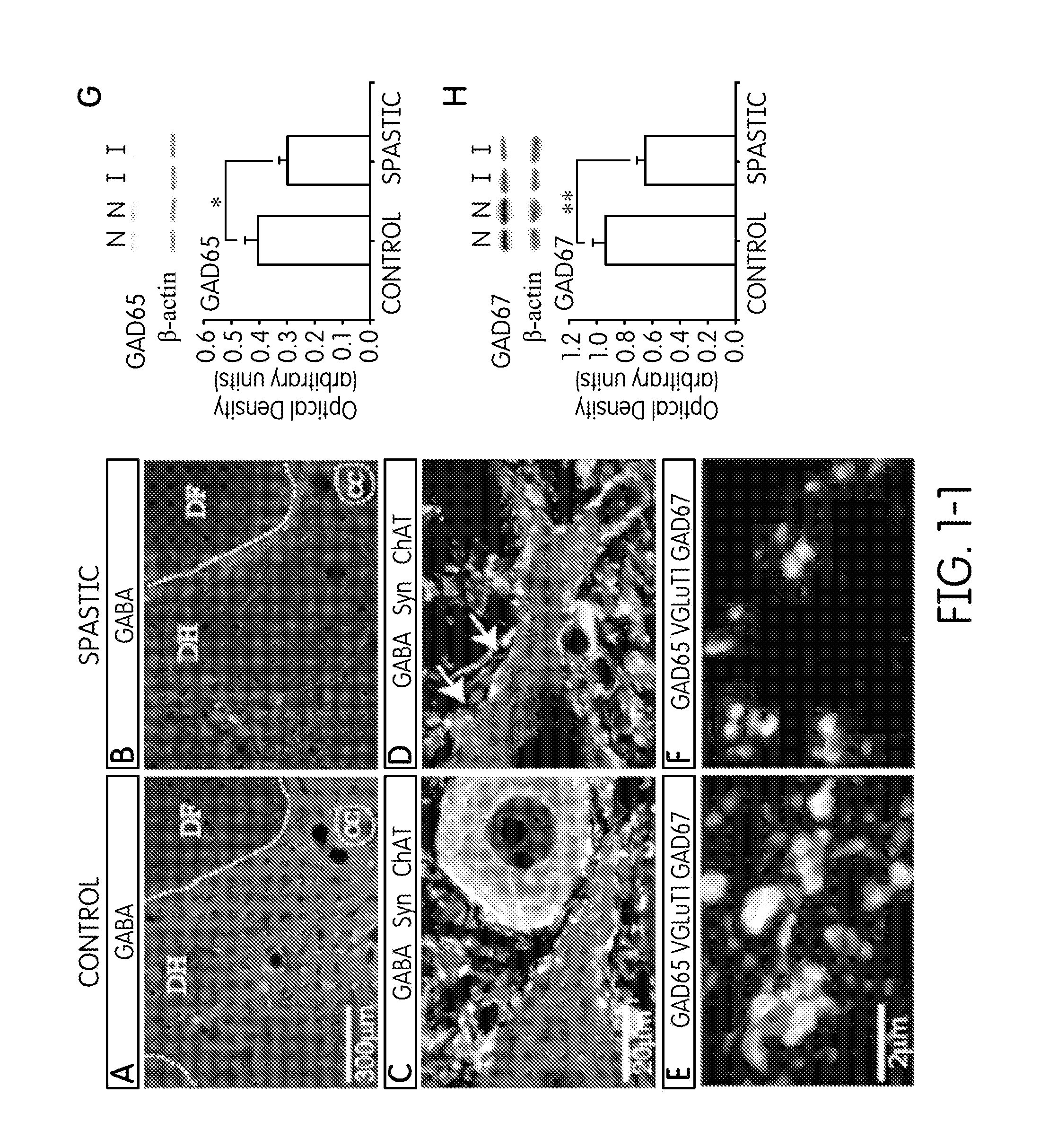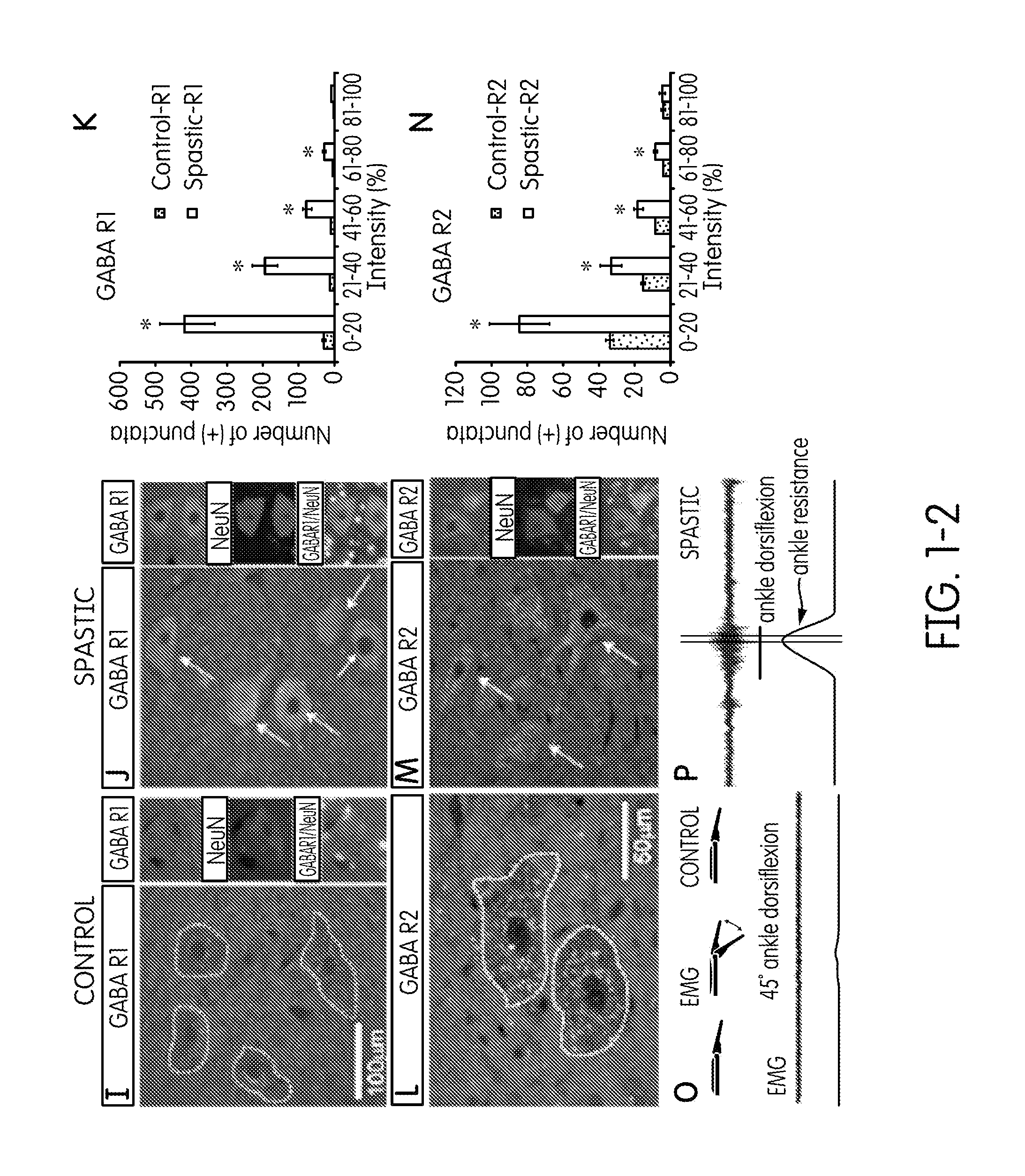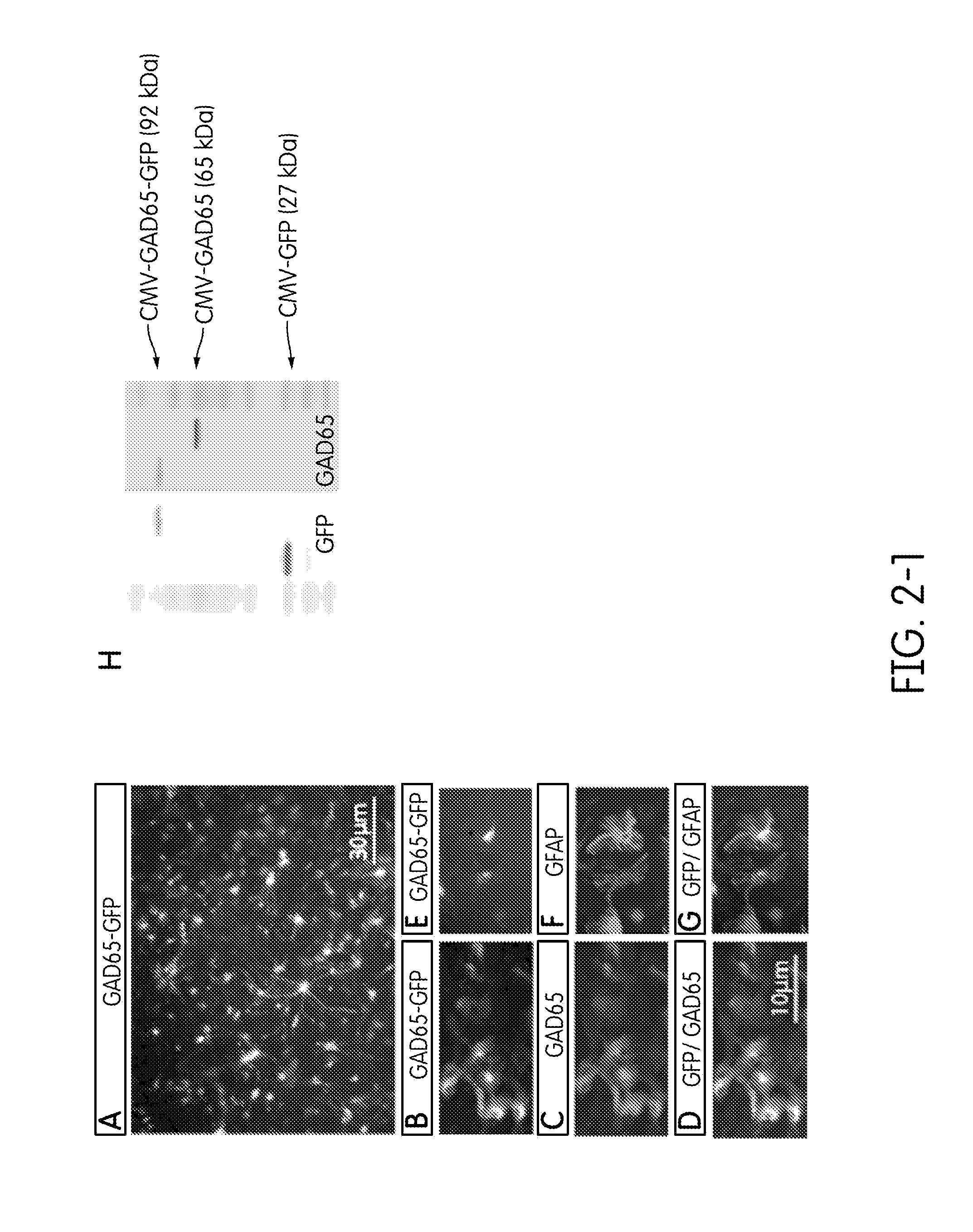Method and composition for treating spasticity
a technology of spasticity and composition, applied in the field of spinal injury treatment, can solve the problems of increased or decreased gaba synthesizing enzymes in spinal interneurons, insufficient to prevent spasticity/hyperflexia, complex mechanism leading to the development of spasticity after spinal injury (traumatic or ischemic)
- Summary
- Abstract
- Description
- Claims
- Application Information
AI Technical Summary
Benefits of technology
Problems solved by technology
Method used
Image
Examples
example 1
Methods
[0070]Induction of Spinal Ischemic Spasticity in Rat—
[0071]Transient spinal cord ischemia (10 min) was induced as previously described. Briefly, in isoflurane (1.5-2%)-anesthetized SD rats, a 2F Fogarty catheter (Am. V. Muller, CV 1035; Baxter, Inc., Irvine, Calif., USA) was passed through the left femoral artery to the descending thoracic aorta to the level of the left subclavian artery. Distal arterial pressure (i.e., below the level of aortic occlusion) was monitored by cannulation of the tail artery with PE-50 catheter. Spinal cord ischemia was induced by inflation of the intra-aortic balloon catheter (0.05 ml of saline) and concurrent systemic hypotension (40 mm Hg) induced by blood withdrawal (10.5-11 cc into a heated (37° C.) external reservoir) via a 20-gauge polytetrafluoroethylene catheter placed in the left carotid artery. The efficacy of the occlusion was demonstrated by an immediate and sustained drop in distal blood pressure. After 10-min ischemia, the balloon w...
PUM
 Login to View More
Login to View More Abstract
Description
Claims
Application Information
 Login to View More
Login to View More - R&D
- Intellectual Property
- Life Sciences
- Materials
- Tech Scout
- Unparalleled Data Quality
- Higher Quality Content
- 60% Fewer Hallucinations
Browse by: Latest US Patents, China's latest patents, Technical Efficacy Thesaurus, Application Domain, Technology Topic, Popular Technical Reports.
© 2025 PatSnap. All rights reserved.Legal|Privacy policy|Modern Slavery Act Transparency Statement|Sitemap|About US| Contact US: help@patsnap.com



